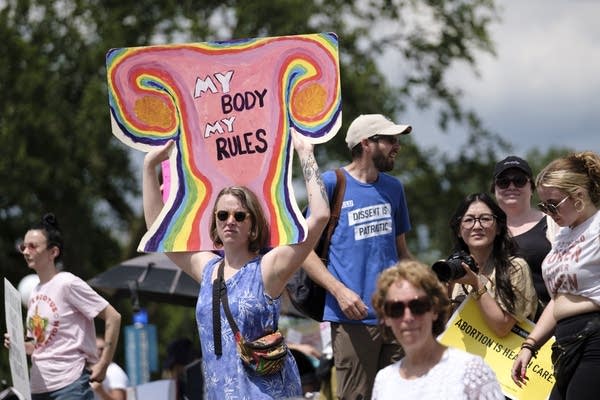Even before the Dobbs ruling, more Americans were traveling for abortions

Go Deeper.
Create an account or log in to save stories.
Like this?
Thanks for liking this story! We have added it to a list of your favorite stories.
Even before last month's Supreme Court decision overturning Roe v. Wade, a growing number of people were traveling across state lines for abortions.
Nearly one in 10 abortions in 2020 were provided to patients who'd crossed state lines, according to a report released Thursday by the Guttmacher Institute. That's up from six percent in 2011. As the report notes, the increase occurred as a growing number of states were passing abortion restrictions.
Interstate travel for abortion is expected to continue to increase as more states enact abortion bans in response to the Dobbs v. Jackson Women's Health Organization decision, issued on June 24.
"These are a baseline for the changes that we expect to see and already are seeing as much more restrictions are occurring in the wake of Dobbs," said Isaac Maddow-Zimet, who co-authored the report for Guttmacher, a research group that supports abortion rights.
Turn Up Your Support
MPR News helps you turn down the noise and build shared understanding. Turn up your support for this public resource and keep trusted journalism accessible to all.
Maddow-Zimet notes that the report looks at data from both before Dobbs and before the implementation of SB 8, an abortion ban that took effect in Texas in September 2021.
Already, clinics in states like Colorado and Illinois, which have less restrictive laws, have been reporting an influx of patients from neighboring states.
The report looked at not only where abortions were provided but also where patients were from.
It found that abortion restrictions did not necessarily translate to fewer abortions. In Missouri, for example, the number of abortions provided there dropped significantly between 2017 and 2020. During the same period, the abortion rate for residents increased by 18 percent when out-of-state abortions were taken into account.
"We're going to see more and more of those kinds of situations, as more and more states put bans in place, where most residents are going to have to travel out of state for care," Maddow-Zimet said.
Guttmacher examined data from sources including the Centers for Disease Control and Prevention, state health departments and its own survey of abortion providers. The report did not capture self-induced abortions, which many experts predict will become increasingly common, particularly for people in states with abortion bans.
Copyright 2022 NPR. To see more, visit https://www.npr.org.



